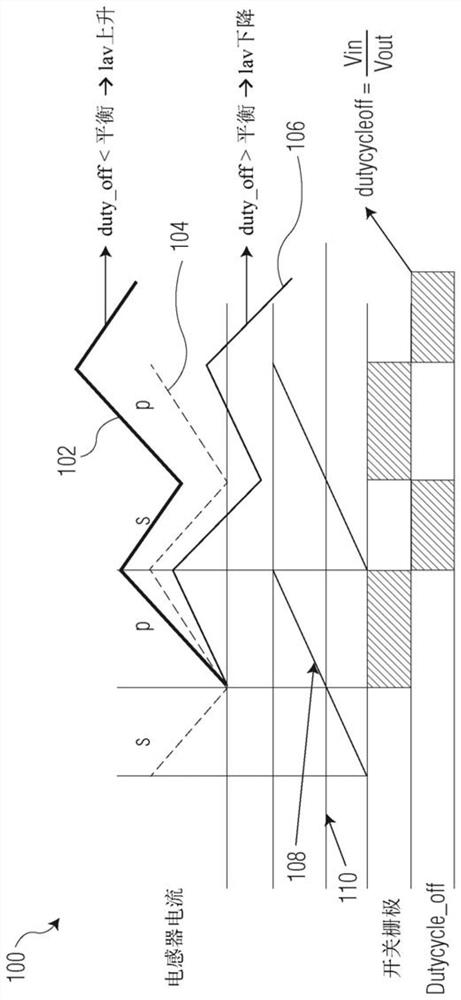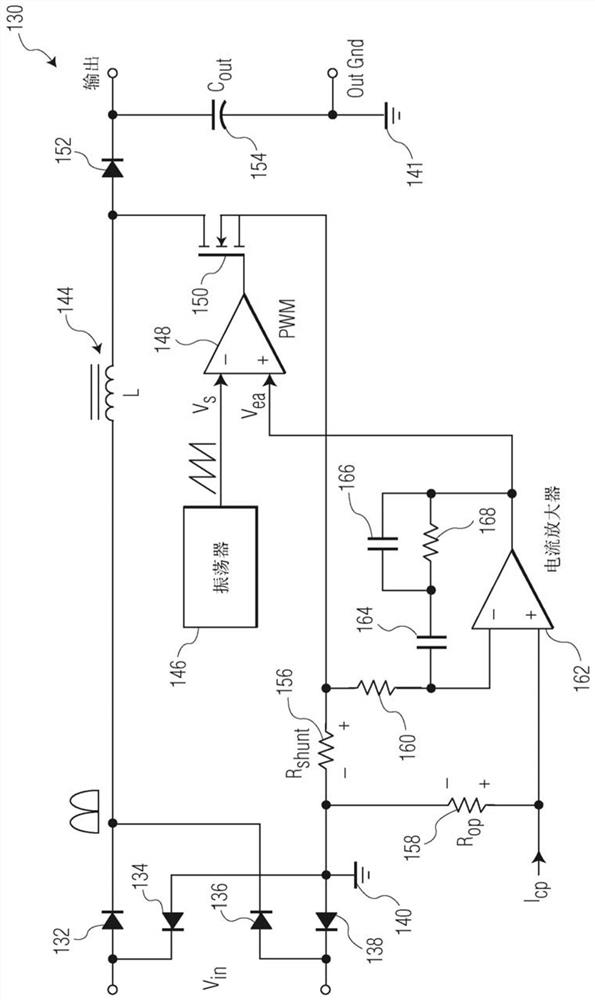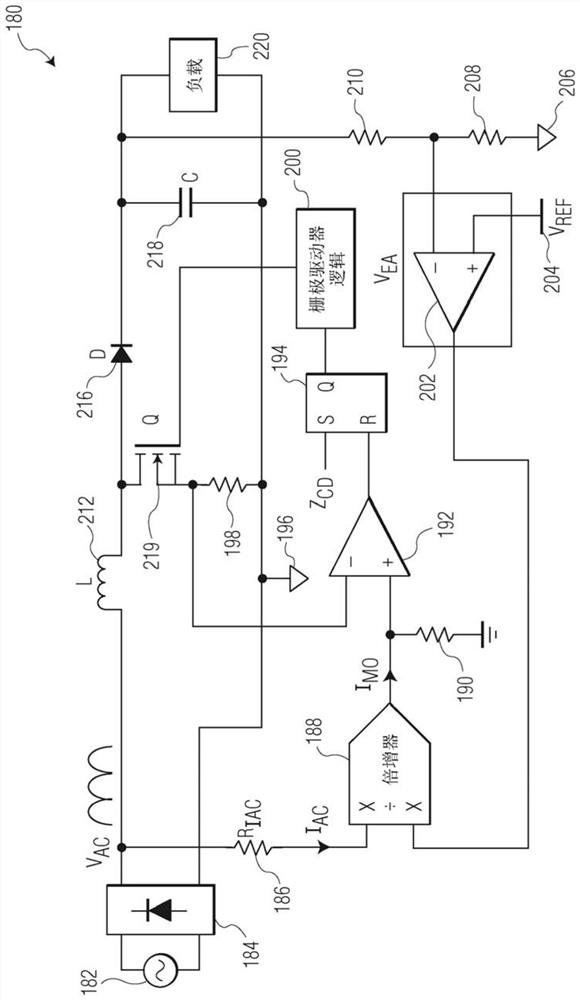Power factor corrector circuit in interrupted conduction mode and continuous conduction mode
A power factor correction, circuit technology, applied in high-efficiency power electronic conversion, output power conversion devices, DC power input conversion to DC power output, etc., can solve instability, define closed loop dynamic performance is complex, and is not expected frequency etc.
- Summary
- Abstract
- Description
- Claims
- Application Information
AI Technical Summary
Problems solved by technology
Method used
Image
Examples
Embodiment Construction
[0073] It should be readily understood that the components of the present embodiment as described herein and shown in the drawings may be arranged and designed in a wide variety of different configurations. Accordingly, the following more detailed description of various embodiments is not intended to limit the scope of the present disclosure, but is merely representative of various embodiments, as represented in the accompanying drawings. While the various aspects of the embodiments are presented in drawings, the drawings are not necessarily drawn to scale unless specifically indicated.
[0074] The present invention may be embodied in other specific forms without departing from the spirit or essential characteristics of the inventions. The described embodiments should be considered in all respects only as illustrative and not restrictive. The scope of the invention is, therefore, indicated by the appended claims rather than this detailed description. All changes that come w...
PUM
 Login to View More
Login to View More Abstract
Description
Claims
Application Information
 Login to View More
Login to View More - Generate Ideas
- Intellectual Property
- Life Sciences
- Materials
- Tech Scout
- Unparalleled Data Quality
- Higher Quality Content
- 60% Fewer Hallucinations
Browse by: Latest US Patents, China's latest patents, Technical Efficacy Thesaurus, Application Domain, Technology Topic, Popular Technical Reports.
© 2025 PatSnap. All rights reserved.Legal|Privacy policy|Modern Slavery Act Transparency Statement|Sitemap|About US| Contact US: help@patsnap.com



